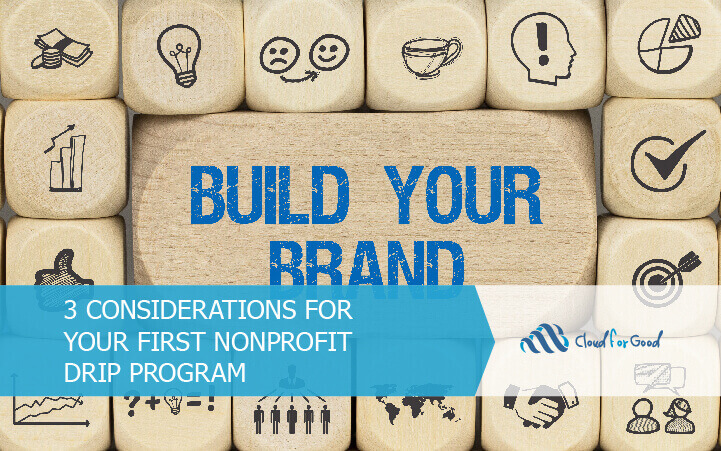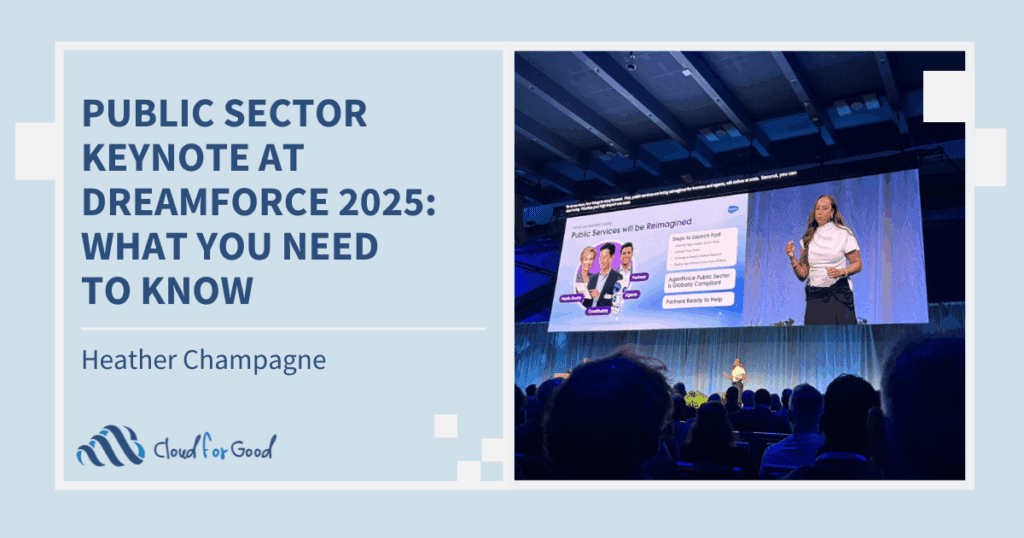Nonprofit drip programs shouldn’t feel overwhelming. In fact, your first nonprofit drip program can be very simple. There are countless email programs with varying complexity and marketing automation features. Maybe you are thinking of adopting automation or you know you’re not maximizing the potential of your current tool. Whether you use Pardot’s Engagement Studio or Marketing Cloud’s Automation Studio, the following considerations will help you create a method to the madness as you figure out your first drip strategy.
Why use marketing automation?
Build Relationships
Whether you are a large or a small nonprofit, your constituents are essential to your success. They might be volunteers, advocates, clients, or donors, and you need to maintain your relationships with them in personal and valuable ways. If you wouldn’t have the same dinner conversation with each of your friends, then you shouldn’t have the same conversation with your constituents. If you’ve already done the work to build personas, then you know they are people with different needs and wants. If you deliver on those, they will be your organization’s most loyal advocates.
Invoke Actions
You want highly engaged constituents and there’s always one more thing you could ask of them. If they subscribe, should the next email suggest they follow social media? If they apply to your program, should they read more about your mission and theory of change? If they donate, should they get a special invitation to your gala at a reduced rate if they can invite eight friends? Each of these goals, which many nonprofits often share, could require your staff to conduct manual follow-ups. Automating these follow up actions will save time and strengthen your constituents’ connection to yourorganization.
Timeliness & Relevance
This is what really sets automation apart as a benefit for your organization. For example, if someone just subscribed to your newsletter, you probably wouldn’t thrust an offer to save 10% on a $500 gala ticket. They simply aren’t that bonded with your organization yet, and thus, crafting unique drip programs to address specific scenarios enables you to customize your engagement. Customized, targeted messaging is essential to your organization’s success.
Who should I add to each of these automation strategies?
Standard segmentation practices are based on constituent attributes, such as demographics, and can be a good starting point for determining to whom you should be marketing. However, now you have an automation tool to help you trigger marketing outreach. But what is a trigger, you ask? Here are some examples:
Data Changes
When data about a constituent is changed, it is often because the constituent’s mindset or affiliation with your organization is different somehow. So as Field X changes to Y or from null to Z, how should your organization respond? If an event management application changes a contact’s status to Registered, that means you should stop inviting them – and start telling them to invite friends to join.
Behaviors
Actions that constituents take – such as simply clicking an email or completing a multi-page application form – are signals of their interest and commitment to your organization. Automating the next step to send an email, adding them to a campaign, notifying a colleague, or assigning a task to call the constituent can help your organization send the right message at the right time to the right person.
What are nonprofit drip program examples?
The options are endless, but we’ve outlined a few examples that can fit into most nonprofit organizations’ marketing plans.
Welcome new subscribers
If someone subscribes the day after your monthly newsletter goes out, don’t make them wait 30 days until they hear from you again. Send a quick autoresponder email once the form is submitted, asking your newly engaged constituent to follow your social channels. A second email might offer opportunities to get further involved with your organization. If they sign up to learn more, automatically add them to relevant campaigns.
Donor nurturing before the donation
This might be a nurturing program to get first-time donors to take the plunge, so a classic example is an end of year appeal campaign. You know many emails will go out every year, so automate them! And consider your newer constituents as needing a different drip program than your most loyal advocates and donors. Further, when someone donates, automate their removal from the appeal list. Once removed from that list, add them to another list offering ways to help reach year-end goals, like sharing with their social networks.
Donor nurturing after the donation
A first-time donor just gave a small gift, but there’s more to do than simply cash that check. Peer-to-peer campaigns often bring new donors who don’t know a lot about your organization – Grandma Doris just wants to support her grandson Steven as he runs that race! Provide her with links to follow Steven as he trains and runs the race. When his race is over, maybe Grandma wants some motivation to see how other active seniors in her area are enjoying the program. Now you’re deepening your relationship with Grandma and tapping into a recruitment opportunity.
Event invitations and follow-up
Send your constituents a typical email invitation for an annual event. For those who opened it, send another email to share more specifics on what they’ll get out of the event. For those who didn’t open the email, send it again in a couple days with a new subject line. Still not registered? The third email can share inspiring content from last year’s event. As soon as someone registers, you can easily remove them from the drip program wherever at the stage in the drip program where they registered, ensuring you don’t send irrelevant invitations and risk unsubscribes.
Engage volunteers
There’s no debate that volunteers are both hard to find and essential to keep. You want to make volunteering easy and you want to make your volunteers feel appreciated. When someone signs up to be a volunteer, ask them to share their preferences for volunteer opportunities and locations. Then, add them to drip programs that meet their defined preferences. With multiple opportunities to sign up and reminders leading up to an event, your automations are making volunteer recruitment easier. Don’t forget to send a thank you after they gave volunteered with your organization. If they didn’t show up, send a kind “sorry we missed you” email and encourage them to find another opportunity with your organization.
Increase applications
If you have a lengthy application process that often takes constituents multiple days or weeks to submit, have you considered what you could be doing with people who start it but never finish? Increase your number of application submissions and perhaps reduce the days it takes to apply by helping applicants through the process. As soon as someone starts an application, send an email with a curated list of tips to ease the process. When they near the end, prepare them for what’s to come after they finish their application, such as a meeting with the program manager . If an application has gone cold for more than 30 days, maybe it is time to reach out with softer calls to action, like opting-in to social media and newsletters, so they will have constant touch points until they’re ready to reapply.
Now get started and map out that vision!
Have fun with this and invite your internal stakeholders to a meeting. With a whiteboard or a pen and paper, you can collaboratively come up with a mapped experience for your constituents. If you keep putting yourself in your constituent’s shoes – what are they doing, needing or thinking at that point in the process – you can design a timely and relevant automation strategy. Couple that with posting your organization’s priorities and goals, the actionable messages you send to constituents will add up to big results. If you are interested in learning more about Pardot, join our webinar on August 10.
Register for our Pardot for Nonprofits Webinar.
More posts you may be interested in:





